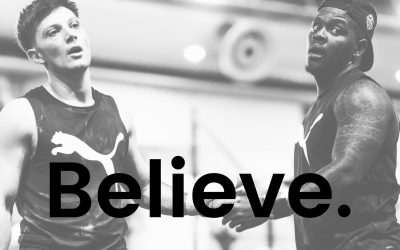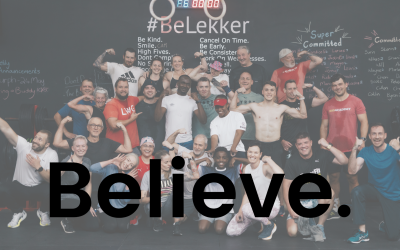When you’re new to CrossFit, strength training can feel confusing. You might see something like “Back Squat 5×5 @70%” on the board and think: “How do I even know what that means?”
This guide will help you understand percentages, how to choose the right weight, and how to progress safely over time.
If It’s Your First Class (or First Time Doing a Movement)
When you’re brand new, your focus shouldn’t be on lifting heavy — it should be on learning how to move well.
Here’s what to do:
- Start light. Use an empty barbell, dumbbells, or even just bodyweight.
- Take your time. Build up slowly during the warm-up sets.
- Controlled reps. Move at a pace where you can think about each step — “feet, brace, squat” — instead of rushing.
- Ask questions. Your coach is there to guide you through the movement.
👉 Think of your first few weeks as “movement practice” rather than “strength testing.”
Why We Don’t Recommend Testing Your Max Early
It might be tempting to see how strong you are, but testing a 1RM in your first couple of months at CFA isn’t a good idea — here’s why:
- Safety first. Your body is still learning the movement patterns. Going heavy too soon can lead to poor form and possible injury.
- Build foundations. We’d rather add volume (more reps with lighter/moderate weights) to help you get comfortable with the lift.
- Consistency > intensity. Your strength will come quickly just from regular training — no need to force it early.
- Longevity. By easing into lifting, you’ll actually progress faster and stay healthier long-term.
Instead of maxing out, focus on progressing steadily — adding small amounts of weight, moving with control, and logging your lifts.
Estimating Your 1RM (No Max Test Needed)
You don’t need to test your heaviest single to figure out your training weights. Use this simple formula:
1RM ≈ Weight × (1 + Reps ÷ 30)
👉 Example: If you lifted 60kg for 5 reps:
1RM = 60 × (1 + 5 ÷ 30) = 60 × 1.17 = 70kg
From there, use percentages of that number to guide your lifts.
Quick Reference: Percentages vs Reps
| % of 1RM | Approx Reps Possible | How It Should Feel |
|---|---|---|
| 50–60% | 12–20 reps | Very light, warm-up weight |
| 65–70% | 8–12 reps | Moderate, smooth but challenging |
| 75–80% | 5–8 reps | Heavy, solid focus needed |
| 85% | 3–5 reps | Very heavy, pushing yourself |
| 90%+ | 1–2 reps | Max effort, only when prescribed |
RPE (Rate of Perceived Exertion)
If you’re unsure or don’t know your numbers yet, you can use “feel” as a guide:
- RPE 6–7 (easy/moderate): Could do 3–4 more reps
- RPE 8 (working hard): Could do 1–2 more reps
- RPE 9–10 (max effort): Couldn’t do another rep with good form
Most of the time, your strength sets should live in the RPE 7–8 zone.
Key Principles for New Members
- Movement first. If the weight compromises your form, drop it down.
- Progress beats perfection. Add small amounts weekly — 1–2kg, an extra rep, or better technique.
- Don’t max out early. Build a base with controlled reps and consistent training.
- Log your lifts. Use Octiv to record weights after class so you can track progress.
- Ask your coach. We’ll help you pick the right load for you.
Putting It Into Action
If today’s workout says Back Squat 5×5 @70%:
- If you’re new → build up to a weight that feels challenging but allows perfect form.
- If you’re experienced → work off your percentages or RPE scale.
- Next week → add a little more or aim for smoother, better quality reps.
Final Thought
Strength training is about building, not breaking. By starting light, moving well, and progressing steadily, you’ll set yourself up for long-term success. The heavy lifts will come — but only after the good reps.
Consistency wins every time 💪



